High tunnels are used as season extenders to grow fruits, vegetables and other crops. They’re also known as hoop houses and are the younger sibling of the greenhouse.
They’re an incredible boon to homesteaders, market gardeners, hobby gardeners, farmers, and anyone wanting to grow their own food year round. This year we got a USDA grant that completely pays for the purchase and install of a high tunnel of up to 2,000 sq ft. In this article, we’re going to tell you how you can do this too!
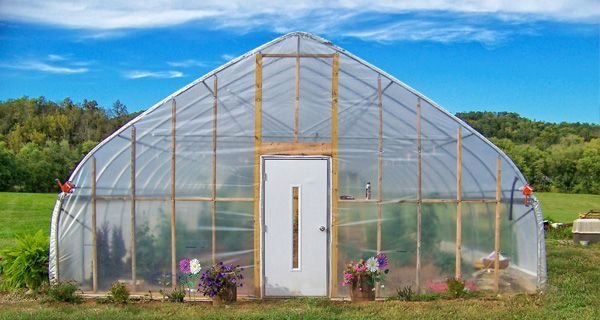
(source)
High Tunnels
High tunnels can effectively extend the growing season and allow plants to grow and produce earlier in the spring and later in fall. This is achieved by creating a protected environment using a layer of thick UV resistant plastic stretched over a series of large hoops. They come in many different sizes, shapes and styles.
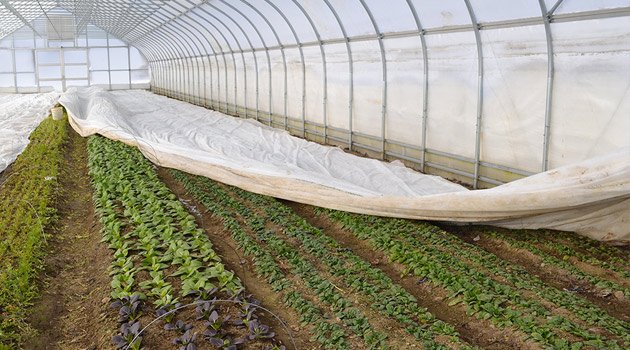
(Row Cover is used in high tunnels to protect crops even more in winter.)
HOW TO GET A HIGH TUNNEL FOR FREE IN THE USA
The government’s use of money is not a subject I care to delve into, but I get pretty peeved when I consider how much is wasted on war, chemical subsidies and bureaucratic inefficiencies… We’re quite thankful to be able to use some of the money for building a more resilient food economy and a brighter future.
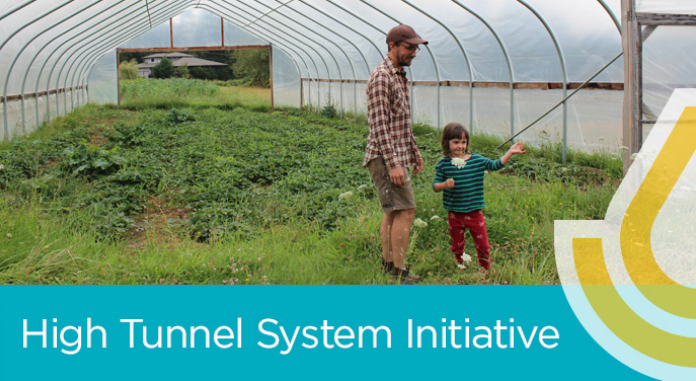
(source)
We received funding through the USDA’s Environmental Quality Incentive Program (EQIP) to purchase and erect a high tunnel on our land.
This is thanks to an initiative started by Michelle Obama to support farmers and increase the quality of growing conditions. One such way is through awarding grants to food producers to enable season extension. (See their website for more.)
For this high tunnel grant the stipulations are that we:
- Purchase a high tunnel kit (as opposed to building one ourselves).
- Use the structure to grow food.
We were waiting for the catch, but really there aren’t any besides the simple guidelines to
• Commit to growing food in it for 5 years.
• Only grow food in it – no tables.
There are no rules about
• What you do with what you grow.
• What you can grow
• How you grow or other practices.

(We're excited to grow heat loving crops like ginger, as pictured here.)
First Steps
We had heard from several of our friends who had been funded for this project in prior years. They were happy with the opportunities this grant opened up (the erection of up to 2,000 square feet of protected growing space). The protected space has helped them produce even more high quality organic produce to feed themselves and their community.
Register Your Farm
The first step for us was registering our farm through the USDA. We were slightly wary of what this entailed, and the possibility of government involvement or interference on our land. We weighed our options and opted in. It is really only a simple process that registers our property as a farm, nothing that gives control over to the USDA.
It took about 15 minutes and didn’t cost us a thing. This is a part of how the USDA creates a statistical database which policies and funding are based on. And hey, what’s the worst that could happen from registering another small organic farm in the database?
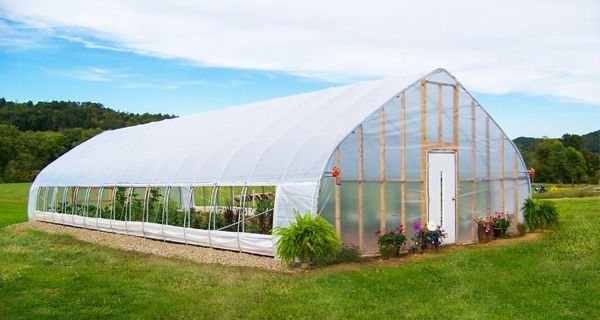
(source)
Site Visit from USDA Local Agent
All we did from there was send an email to our local USDA agent and arrange for a site visit.
She represents both the USDA and the state’s Natural Resource and Conservation Service. When she came and walked our land, we gave her a tour and she took some GPS coordinates. She asked what our plans and intentions were and we went from there. She genuinely wanted to help and support us to achieve our goals and realize our dreams. Soon after the first visit, she informed us that we qualified for the high tunnel grant.
At first the task of obtaining grant money seemed daunting, but it was way easier than we anticipated.
We had some ideas of being limited, having an agent dictate what we were and weren’t able to do. We were pleasantly surprised when the expectations of us were set really low. The USDA has no jurisdiction on our land in terms of management practices, crop selection or any other aspect of how we choose to inhabit this land.
The only criteria for this grant was that we grow food (or even flowers or medicine)!
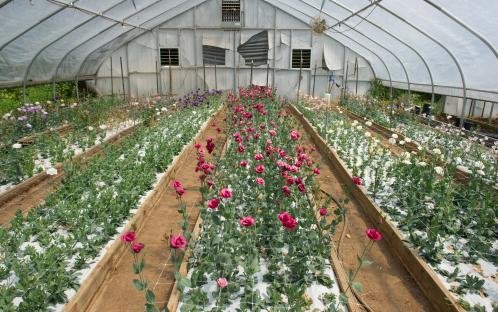
(source)
We looked over the opportunity in front of us and decided to go for it.
We reviewed the grant stipulations with the agent and the contract we were asked to sign. It basically said that we agree to grow food in the ground or in raised beds and not use tables or containers.
As winter nears its end we are getting ready to place our order with a local high tunnel manufacturer.
The process is landing for us now as we walk the site and design layout for the high tunnel. A plan for installing a rocket mass heater for supplemental heat is unfolding and management strategies are being developed.
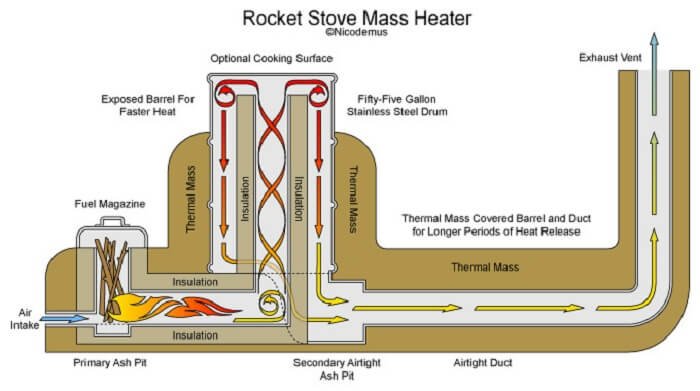
(source)
How you too can get funded to build a high tunnel.
Inquire at your local USDA extension office about your state’s EQIP opportunities or similar initiatives. Many states (like our home state of Missouri) are over funded, meaning there’s more grant money than grant participants. This translates to the approval of almost all applicants. I can’t speak for other states, but it may be worth investigating your options.
If you don’t own land, you can obtain a grant with the land owner’s permission. These grants are funded to get folks growing more food. A few phone calls or emails could mean receiving grant money to build a high tunnel and take your food cultivation to the next level.
We see this grant as a great opportunity to put some government money to good use and try something we may never have endeavored (like erecting a 1500 square foot high tunnel)
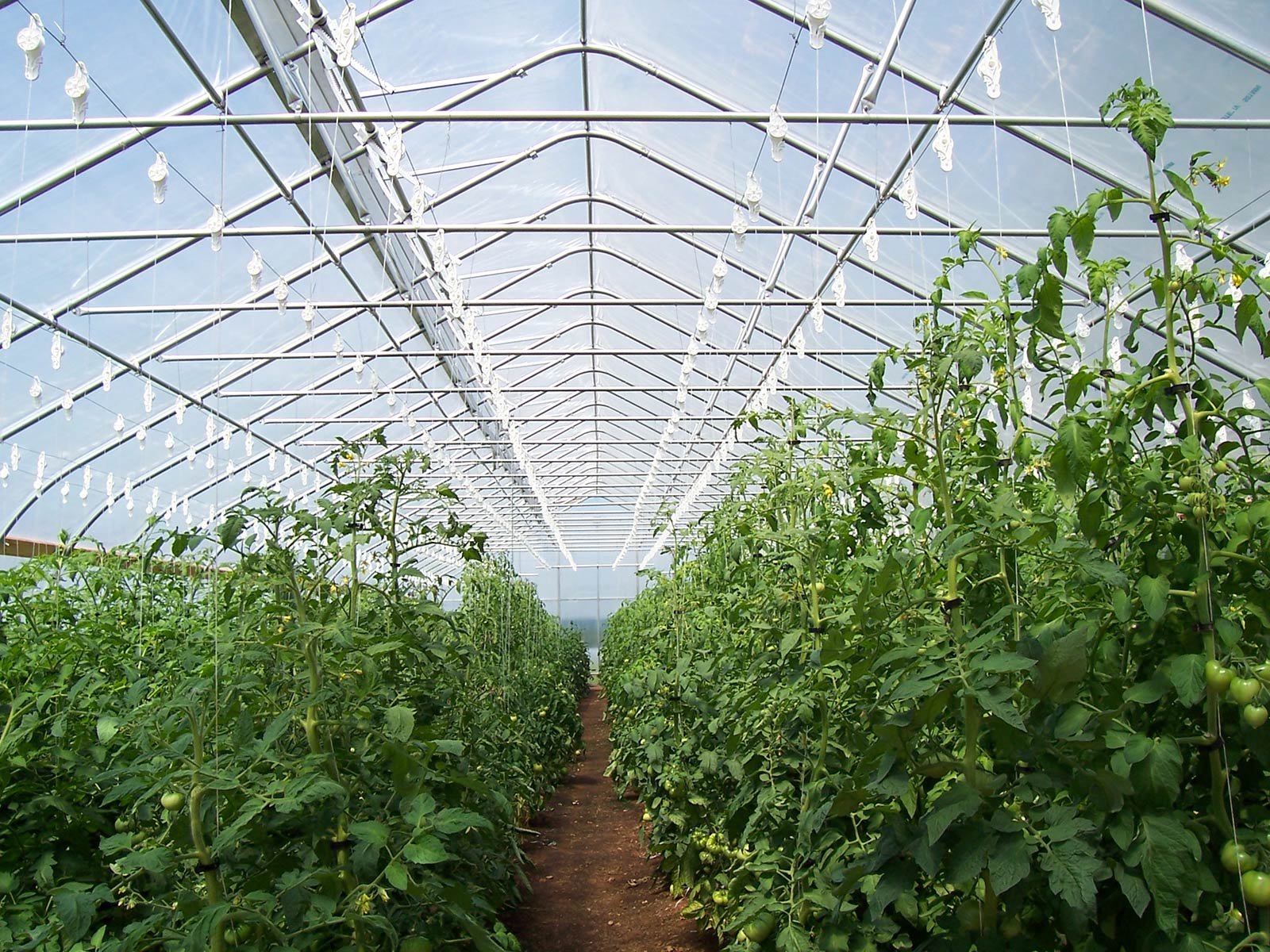
(Tomatoes growing in a High Tunnel, a common commercial crop)
Also know that you don't have to put a 2,000 sq ft high tunnel up. You get paid $4.60 for every square foot UP TO 2,000, but you can do one much smaller if that suits your fancy.
Thanks for reading! We'll be putting ours up in the next couple months and of course will document it on STEEMIT :D

